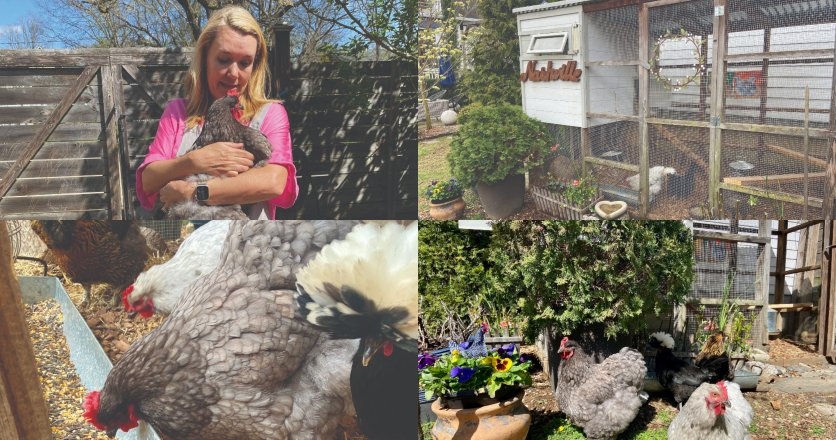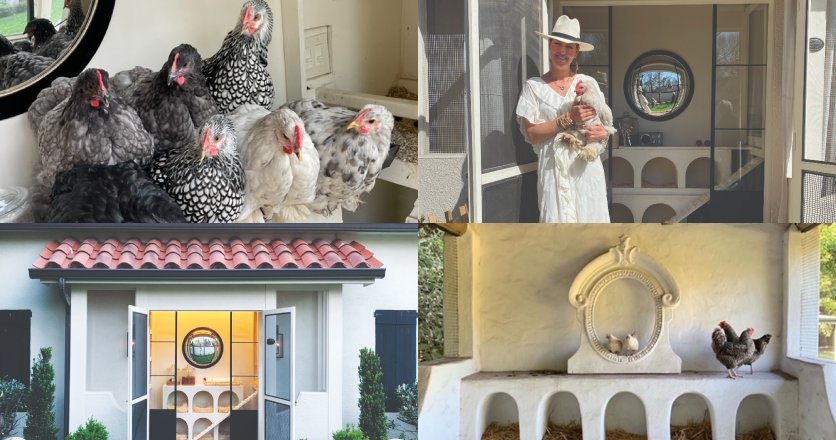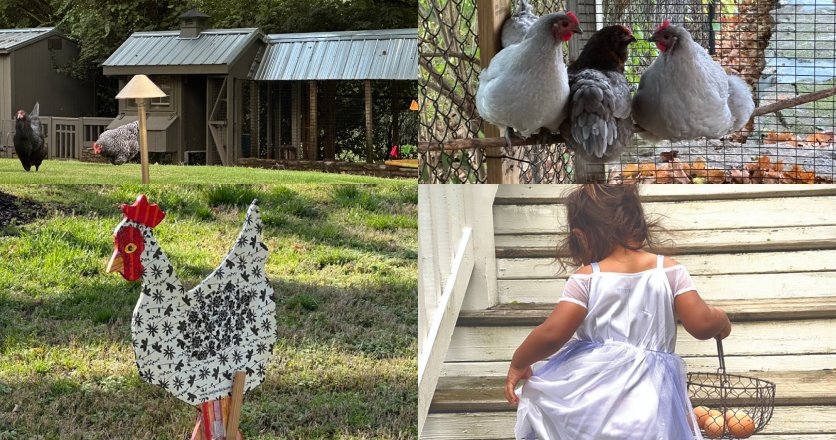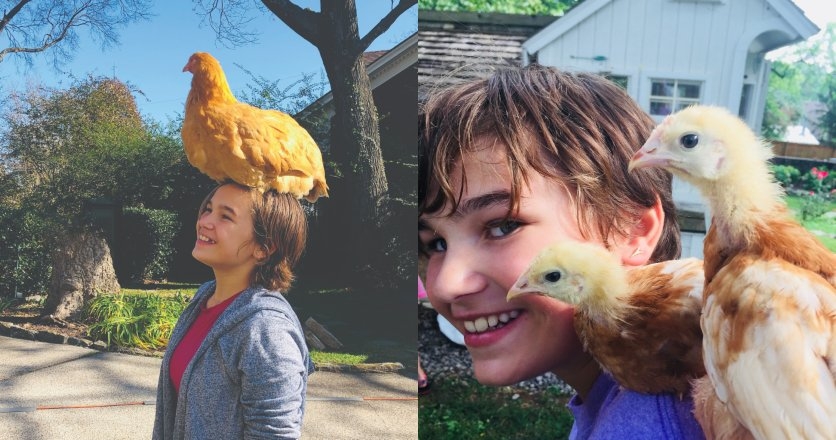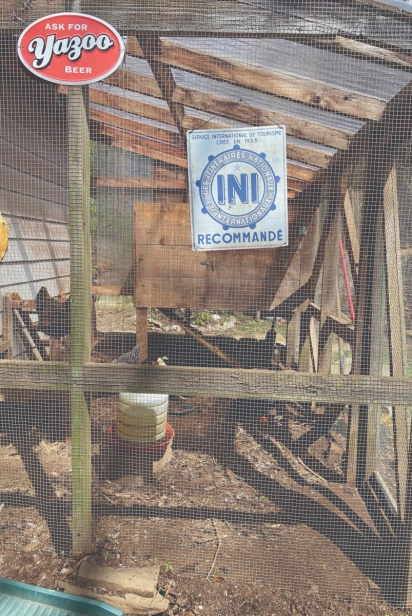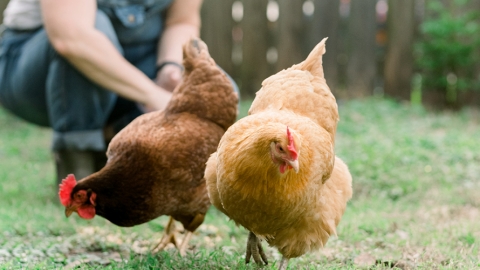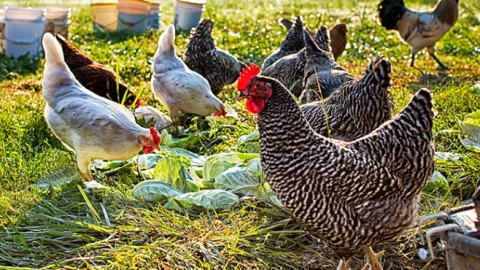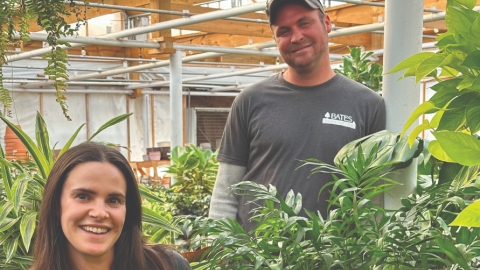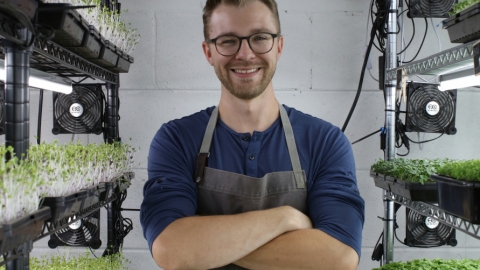Thinking of Having Chickens?
Over a century ago, the U.S. Department of Agriculture asked Americans to keep two hens per household member to support food security in wartime. After World War II, peace brought prosperity and patterns of consumerism that shooed hens—once a civic duty—out of urban and suburban neighborhoods. But today, backyard henkeeping is making a comeback. Motivated by desires to connect with nature, produce fresh eggs, reduce waste in the landfill and teach kids about the sources of food, Nashvillians are inviting chickens into their suburban and urban lives.
Last March, an informal group of henkeepers known as the Nashville Hen Chicks invited poultry-curious visitors on a “coop crawl” of five backyards in Belle Meade, Belmont, Sylvan Park, Green Hills and Whitland. Organized by University School of Nashville’s Evening Classes program, "What the Cluck! The Joys and Challenges of Keeping Urban Hens" led Edible to coops that ranged from earthy to elegant. The Hen Chicks were on hand to welcome us, introduce their micro-flocks and offer a few tips for aspiring henkeepers. Here’s what the Hen Chicks told us:
The Pretorius Henhouse
Kobie Pretorius, Sylvan Park
We currently have four heirloom hens: a feisty white-crested Polish hen, an 11-year-old Ameraucana named Hazel and two gentle Cochins named Clementine and Bluebelle. I’ve owned chickens since before backyard chickens became legal in Davidson County in 2012.
When we first became part of the movement to legalize domestic hens in Nashville, I learned to be a responsible mother hen from my fellow Hen Chicks. I love the way we bonded. I also learned about how the Metro Council works, and the whole process of legalizing our backyard flocks was fascinating.
All these years later, I still benefit from raising chickens — from collecting the occasional egg to welcoming young neighbors to hold our fluffy hens. The birds add beauty and fun to my backyard when they scrub around my garden beds. They provide hours of entertainment as they follow my dog around the yard. (My dog thinks he’s a hen, too.) My children (now in college) love showing off our hens to their friends, and I love having them around while working in the yard.
The Perdikis Henhouse
Ingrid Perdikis, Belle Meade
I grew up with silkie bantam chickens clucking around our garden in South Africa. So when my husband asked me about jewelry as a gift for my 50th birthday, I was touched, but what I dearly wanted was to have a coop and chickens again. My husband kindly obliged.
Our coop is based on plans shared with us by South African garden designer Tone Alexander. We adapted the design and we love it. Built behind our 100-year-old Mediterranean-style house, the coop features steel-and-glass sliding doors, arched stucco nesting boxes, and wall-panel heaters behind the roosting bars.
We have six Cochin chickens — four blue and two silver-laced. We can pass hours at the bottom of the garden, sitting on a bench, with a cup of hot tea, watching them dig and meander around.
The biggest challenge we face daily is hawk attacks. So, we currently have two large inflatable swans and an inflatable peacock in our garden as hawk deterrents. Thankfully our backyard is walled in, or our neighbors would really wonder!
The Wright Chick Inn
Judy Wright, Green Hills
I got chickens for the eggs and because the idea of having them sounded like fun. Twelve years later, I have never looked back. Other than making sure they have fresh food and water, I can go away for a weekend and they are fine — easier than having a dog.
But the real upside is that they are the best composters! They eat everything we put out there. Two of my neighbors juice 40 pounds of vegetables per week and bring the scraps to us to feed the birds. A container full of remains including beets, turmeric, garlic, carrots, etc. will be gone within an hour. Fall pumpkins, too.
During summer, I can go for almost a week without buying food, between my garden’s vegetables and the chickens’ eggs. And then there is the pure joy of watching my grandchildren run out there to get the eggs.
Our coop was constructed by Smucker Farms and is Fort Knox when it comes to protection of the girls. The coop was gifted to us by a realtor who had 24 hours to get it out of the yard of a house he had just sold. We gladly arranged for its transportation to our yard. Three years ago, we added a covered run to the side after some run-ins with hawks and bobcats while the girls were out foraging. We have lavender Orpingtons, an Ameraucana, and Rhode Island Reds.
The Cramer Coop
Anna Cramer, Belmont
We have two chickens, RBG and Sally Ride. Both are Buff Orpingtons. At approximately 5 years old, they still lay eggs, although more sporadically than they used to.
Our coop was built by the previous owner of our house, and we are lucky that she built such a nice home for our chicks. The inside area with nesting boxes and the large outdoor area are all covered by wire to keep out the local hawk. A coop that keeps out predators has been a lifesaver for our girls, as I’ve actually seen a hawk sitting on top of our coop eyeing our chickens for lunch.
We got the chickens at my daughter Lucy’s request and have learned that chickens have lots of benefits. First, the eggs are delicious and hands-down better than the ones from the grocery store, with bright-orange yolks. Second, the chickens eat anything that we don’t. We give them all of our scraps, which means a lot less for our garbage can each week. Finally, chickens are good entertainment. I can spend a lot of time watching them peck, scratch and explore.
The downside to chickens? They do require care. Our daughter feeds them and checks the water every day before school and changes out the newspaper regularly, as well. The cold can also present a challenge, to make sure the chickens’ water does not freeze. In the very cold snap around the holidays of 2022, we had to bring the chickens inside our garage.
The Fox Henhouse
Carrington Fox, Whitland
We first got hens in 2012 to teach our three young boys where food comes from. Over time, our coop has become as much about where food goes. Almost all our kitchen leftovers go to the hens, and several friends deliver bags of vegetable and fruit peelings, shrimp shells and coffee grounds to our coop on a regular basis. Our hens are well fed and our garbage cans are very light.
Over time we’ve had a wide variety of beautiful hens, including Wyandottes, Marans, Australorps and Leghorns. We particularly enjoy the green and blue eggs of the Araucanas and Ameraucanas.
When we first started out, with a makeshift pen, we lost a lot of birds to predators. After investing in a sturdy coop — with deep underground skirting to prevent burrowing intruders and a roof to deter hawks—we have a long-lived flock, which has been a great source of joy, amusement and food for our family and neighbors.



